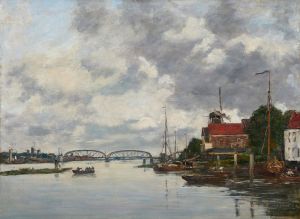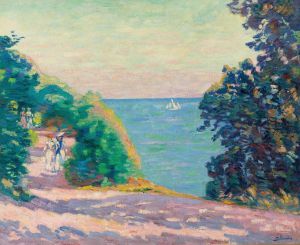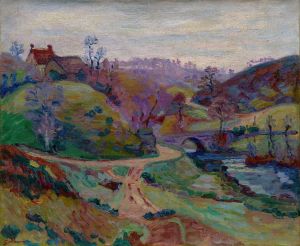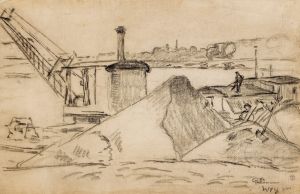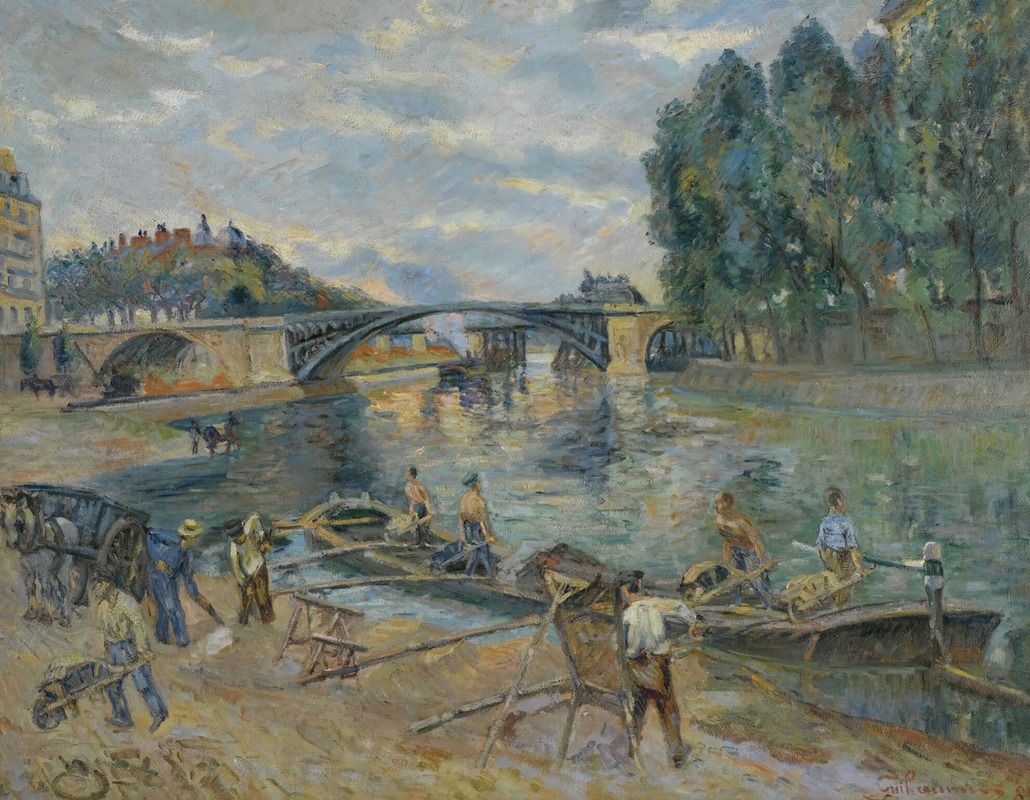
Le Pont De Sully, Paris
A hand-painted replica of Armand Guillaumin’s masterpiece Le Pont De Sully, Paris, meticulously crafted by professional artists to capture the true essence of the original. Each piece is created with museum-quality canvas and rare mineral pigments, carefully painted by experienced artists with delicate brushstrokes and rich, layered colors to perfectly recreate the texture of the original artwork. Unlike machine-printed reproductions, this hand-painted version brings the painting to life, infused with the artist’s emotions and skill in every stroke. Whether for personal collection or home decoration, it instantly elevates the artistic atmosphere of any space.
Armand Guillaumin was a French impressionist painter known for his vibrant use of color and his depictions of the French landscape. One of his notable works is "Le Pont de Sully, Paris," which captures the essence of Parisian life and the architectural beauty of the city. Guillaumin was born in Paris in 1841 and became associated with the Impressionist movement, which sought to capture the effects of light and atmosphere in their paintings.
"Le Pont de Sully, Paris" is a fine example of Guillaumin's work, showcasing his skill in portraying the interplay of light and shadow. The Pont de Sully is a bridge in Paris that spans the River Seine, connecting the Île Saint-Louis to the rest of the city. This bridge, completed in the late 19th century, is an iconic part of Paris's urban landscape, and Guillaumin's painting captures it with a sense of immediacy and vibrancy.
Guillaumin's approach to painting was influenced by his contemporaries, such as Claude Monet and Camille Pissarro, with whom he shared a commitment to painting en plein air, or outdoors. This technique allowed him to capture the changing light and atmosphere of the scene directly onto the canvas. In "Le Pont de Sully, Paris," Guillaumin employs a rich palette of colors, using bold brushstrokes to convey the movement and energy of the city.
The painting reflects Guillaumin's interest in the effects of light on the urban environment. The way he captures the reflections on the water and the shadows cast by the bridge and surrounding buildings demonstrates his keen observational skills and his ability to translate these observations into a dynamic composition. The use of color in the painting is particularly noteworthy; Guillaumin employs a range of hues to depict the natural and man-made elements of the scene, creating a harmonious balance between them.
Guillaumin's work, including "Le Pont de Sully, Paris," was part of the broader Impressionist movement, which sought to break away from the traditional techniques and subjects of academic painting. Instead, Impressionists focused on capturing the fleeting moments of everyday life, often emphasizing the effects of light and color over precise detail. Guillaumin's contribution to this movement is significant, as he was one of the founding members of the Impressionist exhibitions that began in the 1870s.
Throughout his career, Guillaumin remained dedicated to exploring the possibilities of color and light in his work. His paintings often depict scenes of Paris, the French countryside, and other locations he visited, always with an emphasis on the vibrant interplay of color and light. "Le Pont de Sully, Paris" is a testament to his skill and vision as an artist, capturing a moment in time with a sense of immediacy and vitality.
Today, Guillaumin's works are held in various collections around the world, appreciated for their contribution to the Impressionist movement and their unique perspective on the world. "Le Pont de Sully, Paris" remains a celebrated example of his ability to capture the essence of a scene through his masterful use of color and light.










